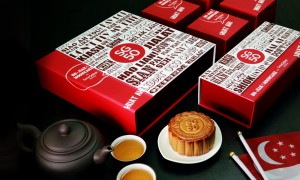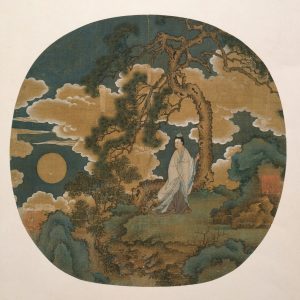Written by Francheska Tan
Edited by Joanne Ng and Leanne Sy
While strolling along the streets of Binondo, one might see people, both young and old, engaging in physical activities––with Taichi as the most common sport. Meanwhile, most schools also value physical education for students. This is because sports are one of the best activities to engage in to stay active and healthy. Studies have also shown that traditional Chinese sports and physical activities have health benefits for adults.
With that, here are five traditional Chinese sports you can try out:
Tai Chi 太极 (tàijí)
1-2-3-4. Tai Chi, also known as Tai Ji Quan, originated as a martial art form. But over time, it was developed into a sport that helps relieve stress. Its name translates to “the great ultimate” because it is a manifestation of yin and yang. Characterized by its slow and smooth movements, tai chi illustrates the contrast between reality and experience. Yin is present in the tranquility of moving freely; while yang arises when the movements reach their limit.
In the same way yin and yang represent balance, tai chi is a great way to achieve balance. It is a non-competitive sport and a gentle physical exercise. It involves stretching and encourages smooth flowing from one position to another.
But that’s not all tai chi can do for you. If you have insomnia or if your body clock’s all messed up, tai chi could help enhance the quality of your sleep. It can strengthen your immune system, help lower your blood pressure, relieve joint pain, and lessen symptoms of congestive heart failure.
Are you looking for a way to prevent back pain? Tai chi.
Do you want to improve your posture? Tai chi.
Wanna calm yourself down, refresh your mind, and just follow the rhythm of your body? Tai chi.
So, next time you see people doing tai chi by the streets, maybe consider joining them. Or, for all college students out there, if you’re shy, try taking tai chi for your next physical education class!
Qigong 氣功 (qìgōng)
Inhale, exhale! Qigong or Chi-Kung is a meditative exercise that cultivates breathing techniques, postures, meditations, and guided imagery. The character 氣 (qì) refers to “breath” and “air,” both of which are considered “vital life force.” The character 功 (gōng) means “work” or “effort,” two words that are reflected in one’s practice of this exercise.
For centuries, qigong exercises have been viewed as a way to cultivate one’s internal energy and internal organs, and aid in the healing of the human body. It has been thought to allow one to manipulate “qi” in order to promote self-healing, prevent diseases, and increase longevity.
There are two techniques to practice qigong, and both rejuvenate the mind, body, and spirit. The first is wai dan, or “external elixir.” It can be done through physical movements and concentration, which is quite similar to tai chi. The second is nei dan, or “internal elixir,” wherein meditation can be done through visualization, guided imagery, or sitting in different postures. So whether you’re in the mood to rise up or to remain seated, you can perform Qigong anytime, anywhere!
Aside from those two ways, there are three different types of qigong for specific purposes.
First is medical qigong. It is done through the self-healing process, to enhance one’s health and, simultaneously, prevent or address diseases. It can also be done through external qigong (also known as “qi emission”), whereby practitioners prescribe exercises to regulate qi and promote healing in daily practice.
Second, Martial Qigong promotes physical prowess through physical feats such as breaking bricks, bending steel wires, and placing sharp objects in vulnerable body parts without damaging the skin. And, between you and me, this is (maybe) the coolest qigong.
Last, but not least, is spiritual qigong. This qigong aims for self-awareness, tranquility, and harmony between nature and the self. These are achieved through a combination of mantras, hand positioning, sitting meditations, and prayers––all of which are heavily influenced by Buddhism, Taoism, and Confucianism.
Yangko Dance 扭秧歌 (niǔ yāngge)
Get up and dance to the music! The meaning of “Yangko” is “to dance and chant in synchronization with folk music.” Unlike tai chi and qigong, Yangko dance mixes different types of movements (vigorous, quick, aerobic, smooth, and flowing) to follow the rhythm of folk songs.
In ancient times, it was practiced as a prayer to the God of Farming for good harvest; this is because Yangko Dance originated from the labor activities of transplanting rice seedlings and plowing farmlands. It was made popular during the Qing dynasty (1644-1911), and is currently considered a performing art, a self-amusement activity, sport, and an exercise.
Studies have shown that Yangko Dance reduces weight, body fat percentage, and body mass index among obese women. It also helps in improving lipid profiles in people with type 2 diabetes, and contributes to balance in postmenopausal women.
If you want to groove and get fit, Yangko Dance is the way to go.
Wushu 武術 (Wǔshù)
Bring out the fire inside you! Wushu, or Chinese Kungfu, is one of the most popular Chinese martial arts. The character 武 (Wu) means “military,” while 術 (shu) means “art,” thus, the complete term is “the art of fighting.” It is inspired by hand-to-hand combat and the use of weapons in the military training of Chinese soldiers. Chinese philosophies and ideas are also incorporated by instilling self-defense and health maintenance through self-cultivation.
Wushu also strengthens the coordination of your body and mind while improving your physical fitness. It trains everything from balance and coordination to bodily awareness.
What are you waiting for? Get up and train yourself for Wushu!
Jian Zi 毽子 (Jiànzi)
Kick your best shot! We are all familiar with the national Filipino sport “sipa” but have you heard of its traditional Chinese version? Jian Zi is a sport and a favorite pastime of both children and adults.
Jian Zi originated in the Han Dynasty (206 BC–220AD) and was originally called cuju (蹴鞠). It was played by military troops as a form of relaxation and exercise. They simply tied some chicken feathers together until it looked like a shuttlecock. Because of that, Jian Zi is also known as “shuttlecock kicking.” In the 19th century, people could score up to a thousand kicks! Isn’t that amazing?
Try to play Jian Zi, and find out if you can also reach a thousand kicks! You’ll also get to improve your eye coordination and balance.
While modern sports have their own fun techniques and health benefits, Chinese traditional sports are just as engaging. It would be nice to try something new, and at the same time integrate the Fil-Chi culture in our lives. You’ll never know, you might just find your new favorite sport that could change your lifestyle!
References:
Ching Yuet Tang. “A Guide to Jianzi, a Chinese Game with a Shuttlecock (but No Racket).” Scroll.in. Scroll.in, July 27, 2017. https://scroll.in/article/844603/a-guide-to-jianzi-a-chinese-game-with-a-shuttlecock-but-no-racket.
Guo, Yucheng, Haiyang Shi, Dinghai Yu, and Pixiang Qiu. “Health Benefits of Traditional Chinese Sports and Physical Activity for Older Adults: A Systematic Review of Evidence.” Journal of Sport and Health Science 5, no. 3 (September 2016): 270–80. https://doi.org/10.1016/j.jshs.2016.07.002.
Her, Peng. “Qigong | Taking Charge of Your Health & Wellbeing.” Taking Charge of Your Health & Wellbeing, 2016. https://www.takingcharge.csh.umn.edu/qigong.
KEATS School. “Chinese Wushu (Kung-Fu).” Keats School, 2022. https://keatschinese.com/china-culture-resources/chinese-wushu-kung-fu/.
Mayo Clinic Staff. “Why Try Tai Chi?” Mayo Clinic, 2018. https://www.mayoclinic.org/healthy-lifestyle/stress-management/in-depth/tai-chi/art-20045184.
MetalAllen. “Yangko Dance – Chinaculture.org.” en.chinaculture.org, November 8, 2012. http://en.chinaculture.org/2012-11/08/content_448261.htm.
Monsta. “Health & Fitness – Benefits of Wushu.” PhysicalArts.com, 2009. http://www.physicalarts.com/en/knowledge/general-interest/health-a-fitness-benefits-of-wushu.
Xiaolei, Jing. “More than a Game — Beijing Review.” www.bjreview.com, November 29, 2007. http://www.bjreview.com/special/2007-11/26/content_87782.htm.
Yoon, Rachel. “HISTORICAL and TRADITIONAL SPORTS & GAMES in CHINA.” ImmerQi, December 15, 2016. https://immerqi.com/blog/sports-games/




